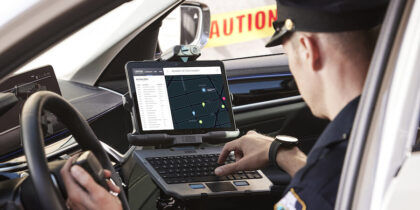Political watchers point to President Obama’s 2008 campaign as a watershed event in the evolution of election data technology as a driving force in political campaigns. He nurtured the social web, leveraged smartphones and embraced Twitter, all to build immense buzz. His 2012 campaign invested over $100 million in technology and ran more than 66,000 computer simulations every day.
That was just the beginning. As social media and other technologies have proliferated, election data has become an even more critical pivot point. We saw the impact of technology on this presidential election early on, from the GOP candidate’s ubiquitous Twitter stream to the embrace of retail visual content strategies at the Democratic National Convention.
Technology has always played a role in politics, from highly-targeted political direct mail, to robocalls, to databases for door-knockers. This time around, the stakes are higher than ever, with four tech trends in particular promising to exert game-changing influence over the November results: big data, the cloud, social media and mobile.
Big Data
Election strategies depend on knowing voters — intimately. If you understand your base, you can potentially mobilize for victory. Big data is the key to that understanding. Thanks to big data, “what you buy, what you read, what you share online, who you associate with, what your mood is, where you work, what you do … all of that information is available to those with the budget to buy it and the algorithms to aggregate and sift through it,” writes ZDNet’s David Gewirtz.
By parsing social media streams via big data, candidates can craft finely tuned messages. They can use social and geographic information to target specific voter blocks. Through sophisticated algorithms, election data can be used to determine critical resource allocation decisions about where and how critical marketing dollars may be best spent. New analytics techniques, backed by the tremendous decline in RAM cost, make this kind of targeting possible.
The Cloud
The cloud is poised to help make election data a deciding factor in November, both as an enabler of big data and as a tool for managing unprecedented volumes of potentially critical voter information.
The cloud offers unparalleled computing power. In 2012 the Obama campaign built and ran more than 200 applications on Amazon Web Services, according to post-election analysis. One campaign-calling tool supported 7,000 concurrent users and placed over two million calls on the last four days of the campaign. That campaign used the Amazon Relational Database Service, another cloud service, as the primary registry of voter file information.
Cloud is also influencing campaigns’ ability to get up close and personal with potential viewers. Its staggering computer capacity allows campaigns to produce higher-quality videos for consumption by mobile users via LTE or Wi-Fi.
Mobility
Mobile devices are most Americans’ primary means of communication today, a fact not lost on campaign planners. By combining smartphone apps with location-targeting tools, candidates have “countless opportunities to reach the right voters, at the right moment, throughout their decision-making journey,” analysts say.
Mobile outreach has the potential to draw participants to rallies and events, bolstered by their smartphones’ geolocation capabilities. The prospect of the mobile impulse buy suggests campaigners could leverage smartphones as a vehicle for on-the-spot donations, aided by the functionality of mobile commerce.
Social Media
Social media use has exploded since candidates Obama and Romney experimented with Facebook and Twitter, with 2.34 billion users in 2016, up from 1.4 billion in 2012.
Not surprisingly, social media has been a hotly contested space this time around. In August, Donald Trump had a reported 22.7 million likes and followers on Facebook, Twitter and Instagram, to Hillary Clinton’s combined 15 million. Clinton led Trump on YouTube, where her ads had drawn 16.4 million views to the GOP candidate’s 8.1 million.
Social media doesn’t just give the candidates access to voters. It allows them to engage in conversation and draw potential supporters into a political dialogue. People can share their thoughts, “like” candidates’ posts and repost content, sometimes generating media attention in the process, thus giving an added boost to the initial message.
Social media also generates election data — reams of information connecting individuals to their passions, their locations and their immediate concerns. This takes us full circle, back to big data, whose tools and techniques can help turn this flood of social media information into practical results on Election Day.
While tools like political direct mail still have their place, it’s clear that the capabilities of big data, mobility, social media and the cloud are ushering in a new era of campaign technologies.
Data-driven marketing has also been proven to produce superior results in industries such as government and finance by making data more understandable and accessible.







